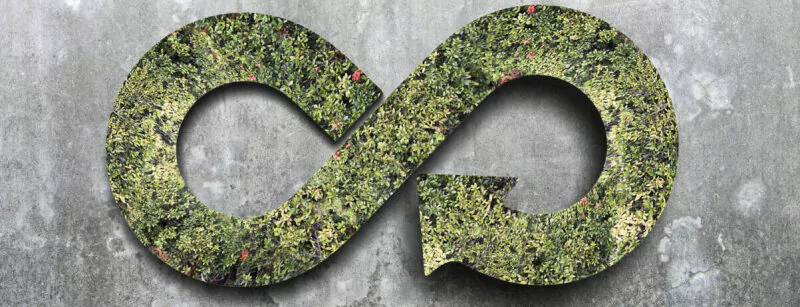Information transfer is crucial in building a circular economy, as a recent paper by the European Policy Center discusses.
The European Green Deal as well as discussions around recovery from the coronavirus crisis are centred on the recognition that Europe needs a twin transition: green and digital transformations that could change the economy and society for the better. While too often these transitions are treated as separate issues, aligning the digital and green transitions could bring multiple benefits.
The European Policy Center has published a new paper that illustrates what this twin transition could mean in practice, by focusing on the role of digitalisation in enabling information transfer – a central piece of the puzzle for creating a circular economy (CE).
The rationale for action is given. Circular economy is crucial for cutting greenhouse gas emissions, avoiding pollution, reducing resource depletion and minimising waste in Europe and across the globe. By retaining the value of goods (e.g. by designing durable products and via repair and recycling) it can make EU’s economy more competitive, as well as more resilient.
At the same time, the ongoing digital transformation carries the potential to address one of the main challenges to a CE: the lack of information transfer across value chains. Already today, online platforms, databases, apps, sensors and connected machines facilitate the sharing of data and information for the benefit of a circular economy.
This said, enabling such information transfer continues to be hindered by concerns over protection of personal and business-sensitive data, as well as by a lack of common data standards. In practice, policy and financial incentives for businesses to adopt digital information transfer for CE are still limited. Modern supply chains are often transnational and complex, and not all actors have similar interests when it comes to sharing of data and information.
Just as digital information transfer is a must for CE, enabling policy framework is crucial to ensure that rules on data handling and digital tools for information sharing are developed and used to their fullest potential. Using digitalisation, data and digital solutions, to enhance information transfer for the benefit of a circular economy is a perfect example of how the digital transition can support the green transition, and how aligning the agendas can help support the European Green Deal. To build on this potential the EPC, based on a series of workshops and additional research, put together a set of recommendations:
- The EU must establish a digital information system for a circular economy by 2030, which would enable exchange of information that is necessary for improving circular practices in value chains, such as the better design, reuse, repair and recycling of products. It should lead the way towards building a global digital information system for circular economy by 2040.
- The EU must establish a common European data space(s), a governance framework, that can enable effective information transfer for CE. The EU must develop a functional common European data space(s) together with industry, member states, civil society and other relevant stakeholders. The common data space should build on all relevant existing data sets and needs to be customised for different value chains, notably, electronics, automotive sector, textiles, plastics packaging and chemicals.
- The EU must establish rules for the use of digital product passports (DPPs). Such rules should build on the EU’s current efforts to develop common European space(s) and further specify which data should be made available via DPPs, for which product categories and how. The EU should start with developing voluntary standards for digital product passports and subsequently assess if and when mandatory rules are necessary.
- The EU should use its economic and financial tools to enhance digital information transfer in circular value chains. The Multiannual Financial Framework and Recovery and Resilience Facility should be used to invest in developing digital tools (e.g. blockchain, IoT), infrastructure and skills necessary for digital information transfer for a CE. When further developing the sustainable finance agenda, the EU should consider how its rules can help direct private investments towards digital information transfer for CE.
- The EU must lead global efforts to develop rules and standards for using data and digital tools to support information transfer for CE. This entails collaborating with international partners in developing necessary rules. Moreover, looking ahead, the EU should consider introducing minimum CE-related transparency requirements for products entering its single market that could benefit from digital tools for information transfer.



